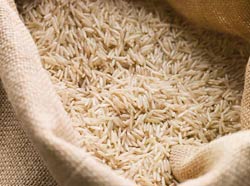If you like oiling your hair for lustre and strength, here’s a range of options

Healthy hair is considered a symbol of beauty and a sign of health. And a lot of investigation has gone into developing ways to help you improve the quality of your hair. One simple way is to nourish your scalp and roots with the right hair oil. The choice of oil depends on a lot of factors such as the condition of your hair, the fragrance that pleases you, and the season.
Oil array
There are many oils that are good for your hair. Of these, coconut, almond, jojoba, sesame and castor are natural oils, while Bhringamalaka, neelibringadi, dardurodi and amla oil are herbal.
Natural oils are often teamed with essential ingredients like eucalyptus, juniper, lemon, sandalwood, lavender, myrrh, tea tree, rosemary, basil and peppermint among others. These ingredients add aroma to the oils along with their therapeutic properties. These are strong and work best when mixed with carrier oils like almond, avocado, burdock, camellia, castor, jojoba, macadamia nut, olive, coconut, peanut, sunflower, safflower or sesame oil.
When you choose an oil, you have to also consider the quality of your hair and general health in addition to the properties of the oil. This is because some oils might not suit you. For instance, some oils are cooling and if you have a tendency for catching colds, using such oils might trigger colds in you.
Let’s understand the different hair oils available and their properties to make the right choice.
Coconut oil
The oil is extracted from the flesh of the coconut. Coconut oil penetrates deep and nourishes the hair follicles along with the shaft. Researchers from the Princeton University too concede to this fact.
Make your own hair oil
Amla oil: Mix equal parts of fresh amla juice with fresh bhringaraja juice and milk. Add some sesame oil or coconut oil to this mixture and boil till the water evaporates and the oil remains. You can even soak dried amla in coconut and sesame oil and then use the oil.
Aloe vera: Take a big well-grown aloe vera leaf and slit it lengthwise. Keep a handful of fenugreek seeds inside it. Tie it into a bundle with a thread and let it stay for 24 hours. Then, scrap the fenugreek and aloe pulp and boil in coconut or sesame oil until you obtain a golden-brown liquid. Cool and preserve. The oil makes hair soft and lustrous.
It has antibacterial, antiviral and antifungal properties and hence is beneficial in infections of hair and scalp. It is a source of essential fatty acids and is rich in vitamin E and K, iron and minerals.
Coconut oil is an excellent emollient and ensures growth and nourishment of hair. It has been used since centuries owing to its safety and effectiveness.
Hair loss or thinning due to medication, hormonal changes, stress, and pollution can be managed by skillful and regular application of coconut oil. It protects hair by preventing swelling and shrinking of hair shaft—the primary reason for hair damage.
The oil also helps in dandruff, scalp infection, dry hair, split ends and other hair problems. The Coconut Research Board, USA, lauds it as an effective conditioner and its ability to help in re-growth of damaged hair.
It is also a good carrier oil. It has no shelf-life and needs no preservatives, nor does it require any refinement or processing and is inexpensive. The coconut oil that is commonly available is refined and hence doesn’t have a strong coconut aroma.
Coconut oil significantly reduces protein loss from hair [even damaged hair] when used before/after hair wash, found a study by The Research and Development Department of the Nature Care Division, Mumbai.
Jojoba oil
Jojoba oil is derived from the seeds of the jojoba plant that grows in the American desert. It is also known as pignut, coffee berry and deer nut. Native Americans have been using this oil for skin and hair problems since many centuries. Jojoba oil is similar to the sebum secreted by the sebaceous glands in the skin. Hence, it helps nourish a dry scalp. It is usually referred to as liquid wax and it contains many nutrients including vitamins E and B that are beneficial to the hair. The oil has great penetration properties; it is particularly known to dissolve dirt and sticky build-up on the scalp, helping keep the hair clean.
It is known to bring out natural colour and keep hair tangle-free.
Although it’s not known to be harmful, it’s advisable to do a patch test for this oil before you use it on the scalp because it may cause allergic reactions in some. This oil too has a high shelf-life.
Castor oil
Castor oil is highly recommended for growing thick, black hair and also to relieve scalp infection. The germicidal properties of omega-9 essential fatty acids present in castor oil protect the scalp and hair from microbial and fungal infections.
In addition, the fatty acids nourish the hair and prevent the scalp from drying by retaining moisture. It also has oleic acid similar to olive oil and the two are usually mixed together before application for better results.
Castor oil has been used for scalp massage in infants and has been known not only to ensure healthy hair but also bestow overall good health.
As castor oil is thick and can penetrate fast, it is best avoided in people suffering from sinus congestion, high intraocular pressure [eye pressure], high blood pressure and those suffering from constipation and other digestive problems.
Olive oil
Olive oil is best known for eliminating dandruff and for conditioning the hair. Olive oil was first used by the Greeks. It has vital ingredients that prevent the formation of dihydro- testosterone, a hormone responsible for hair thinning and male-pattern hair loss. This oil is rich in vitamins E, D and K, niacin and biotin, all of which ensure healthier, thicker hair. The phenol compounds in olive oil help in repairing the damage caused by pollution, alcohol and cigarette smoke. It also regulates sebum production and lubrication of the scalp and hair. It’s considered to be great for hair and skin during winter.
Sesame oil
Sesame oil [til oil or gingelly oil] has been in use since the Indus valley civilisation. It has antioxidant properties and when used for head massages, relieves stress and acts as a relaxant. It also mitigates anxiety, nerve and bone disorders, poor circulation, poor immunity, insomnia, lethargy, aches and pains. The oil takes long time to turn rancid and is therefore a good ingredient in herbal oils.
Almond oil
Almond oil is non-greasy and has all the right nutrients to nourish a dry scalp. It’s perfect for those who don’t like strong odours since it has a mild aroma. It is safe and does not cause irritation like some hair oils. Oleic acid and linoleic acid form the major fatty acids in it and has beneficial bioflavonoids, vitamin E and calcium and is soothing to hair and scalp, thereby fostering hair growth. According to Herbal Ayurveda Research Centre, India, regular use of almond oil reduces hair fall.
The lesser-known oils
Rosemary oil stimulates hair follicles and prevents degeneration of hair.
Avacado oil has nutrients such as proteins, vitamins A, D, E, and B6, amino acids and folic acid, which nourish hair. The oil is popular among African Americans.
Emu oil has been extensively used by aboriginals in Australia and has been valued for its health promotion of the scalp.
Neem oil is used in cases of scalp itching or infection.
If some oil doesn’t reduce your symptoms or triggers hair fall, dandruff, burning eyes, greying or split ends, change it immediately, though it’s highly unlikely if you use herbal or natural oils.
Ayurveda says…
The nature or prakruthi of hair oils differ as does the prakruthi [constitution] of every individual. An oil will work better if it suits your constitution.
Vata: Use sesame, castor or almond oil. You can also add herbs like bala, eranda, bramhi, vaccha and bilwa that pacify vata.
Pitta: Use olive or coconut oil. You can add amla, hibiscus, bringaraja, chandana or yesti to them.
Kapha: Jojoba or mustard oil [not recommended in summer]. You can add neem, tulsi, bringaraja or bramhi to them.
For better results, the oils have to be applied warm.
Don’t massage the scalp with oil…
- If you are suffering from high fever, blocked nose and sinuses, constipation or digestive problems.
- Immediately after surgery or on the day of chemotherapy.
- The day you undergo emesis [vomiting] or purgation.
Avoid using oils containing minerals, petroleum oils or gels, harsh additives and permitted colours like parabens
or sulfates.
The right way to massage
- Heat the oil of your choice for a few minutes. It should be warm, not hot.
- Then, dip your fingertips in the oil and apply it on the scalp.
- Massage with gentle circular motion, keeping the pressure same.
- Make sure to apply oil on the shaft and hair end as well.
- Massage for 4 – 5 minutes.
- You will feel a tingling sensation.
- Do not scratch or dig your nails in the scalp.
- Slide your fingers into the scalp at the base of the hair; grab some hair in your fist and gentle tug. This stimulates circulation.
Wash after 15 minutes. You can leave the oil on the hair overnight. Avoid keeping it longer as it will start attracting dust to the hair and have the opposite effect.
Massaging scalp is not only beneficial for hair and scalp but also for ensuring peaceful sleep and a calm mind.
http://completewellbeing.com/article/hair-oil-options/



 Healthy hair is considered a symbol of beauty and a sign of health. And a lot of investigation has gone into developing ways to help you improve the quality of your hair. One simple way is to nourish your scalp and roots with the right hair oil. The choice of oil depends on a lot of factors such as the condition of your hair, the fragrance that pleases you, and the season.
Healthy hair is considered a symbol of beauty and a sign of health. And a lot of investigation has gone into developing ways to help you improve the quality of your hair. One simple way is to nourish your scalp and roots with the right hair oil. The choice of oil depends on a lot of factors such as the condition of your hair, the fragrance that pleases you, and the season.









